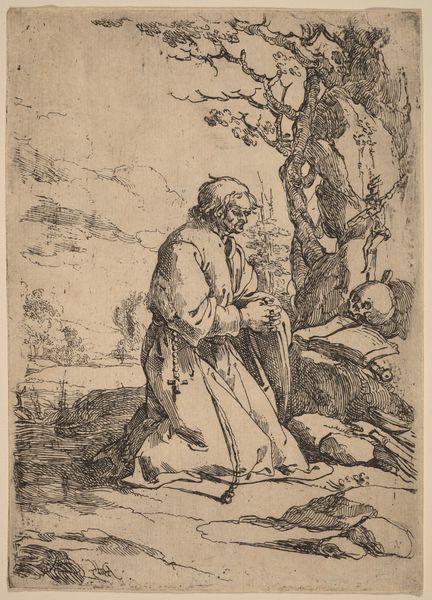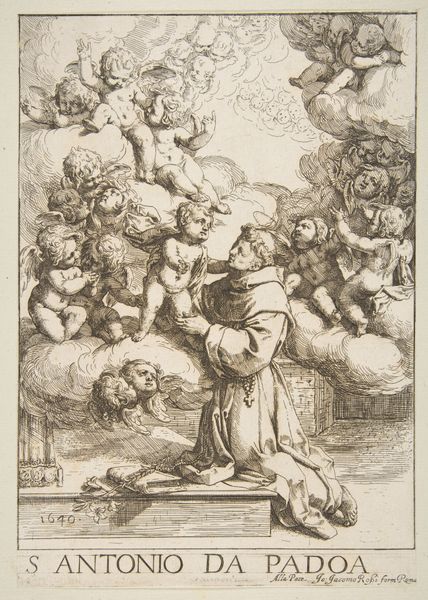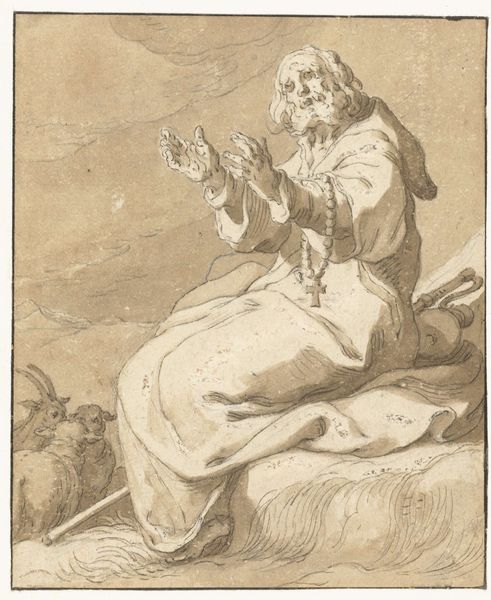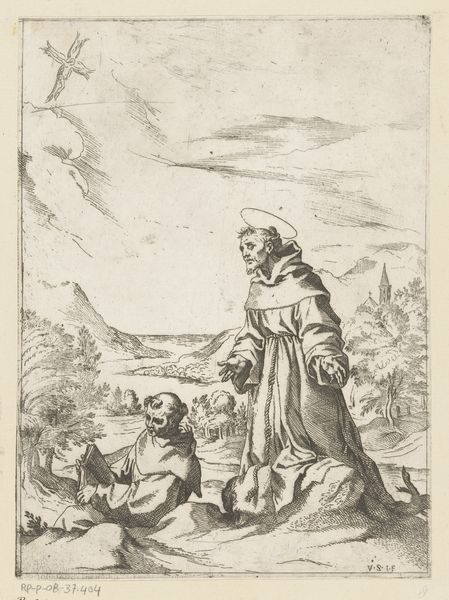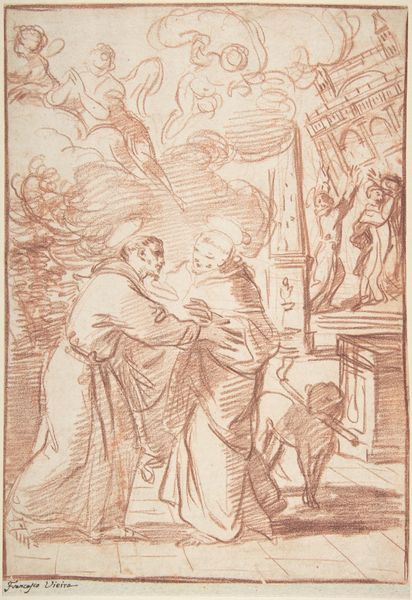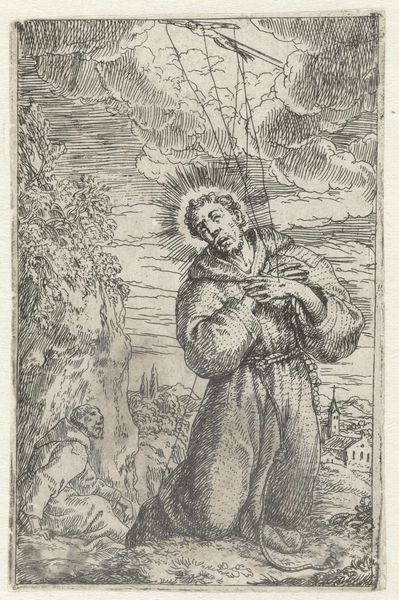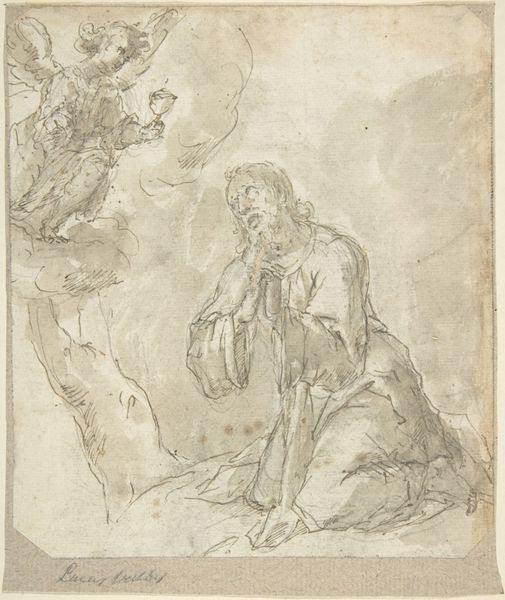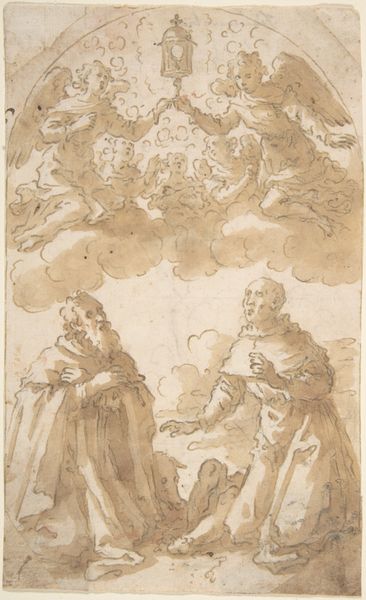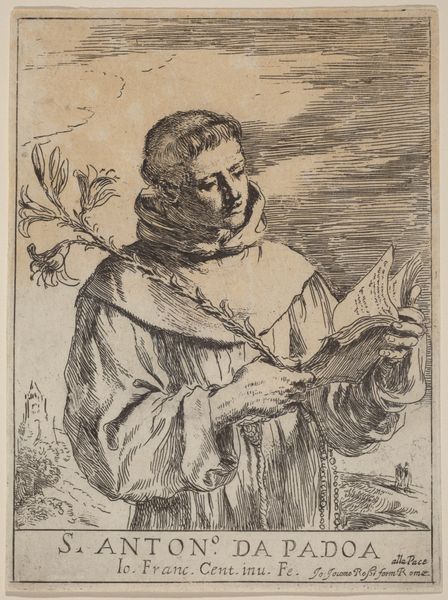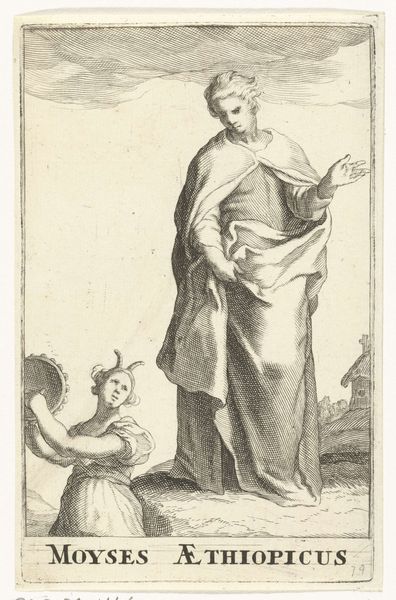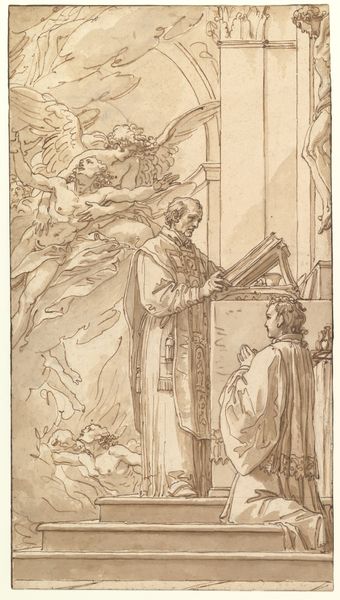
The Vision of Saint Anthony of Padua 1645 - 1705
0:00
0:00
drawing, print, etching, intaglio
#
drawing
#
baroque
# print
#
etching
#
intaglio
#
figuration
#
men
#
history-painting
Dimensions: sheet: 7 x 5 1/16 in. (17.8 x 12.8 cm)
Copyright: Public Domain
Editor: This is "The Vision of Saint Anthony of Padua," a Baroque-style intaglio print and etching, dating from between 1645 and 1705, by Vicente Salvador Gómez. The linework feels incredibly delicate, almost ethereal. What do you see in this piece, particularly in how the materials and process contribute to its meaning? Curator: The etching technique here, and the printmaking process in general, are central. This wasn't a unique object crafted by the singular hand of the artist, but a reproducible image made accessible to a wider audience. Consider how the very act of printing allows for the dissemination of this vision, blurring the lines between high art and popular devotion. Notice, too, how the etched lines, almost nervously rendered, evoke a sense of immediacy – as if capturing a fleeting, intensely personal experience. Editor: So, it's less about the artist's individual skill and more about the act of making it available through mass production? Is that fair? Curator: Precisely! The material realities of printmaking—the labor involved, the costs of production, the network of distribution—all influence the artwork’s reception. What was the role of these devotional images during this period? How might their consumption shape beliefs and behaviors? This is not simply an image; it's a manufactured object with a purpose. Look at how the scene itself is rendered; how do you think that rapid style might relate to printmaking of the era? Editor: I suppose it's inherently reproducible, so a more refined approach wouldn't really amplify the message and might not suit the process... I’m starting to think differently about the piece now. It’s less about a divine moment and more about how such moments were fabricated and distributed. Curator: Exactly. We've considered the networks through which art is produced and circulates, the artist being just one factor. Remember, every artwork has its means of production and consumption. Editor: Thanks for helping me to think about art beyond just the aesthetic, into how it’s made and received!
Comments
No comments
Be the first to comment and join the conversation on the ultimate creative platform.
